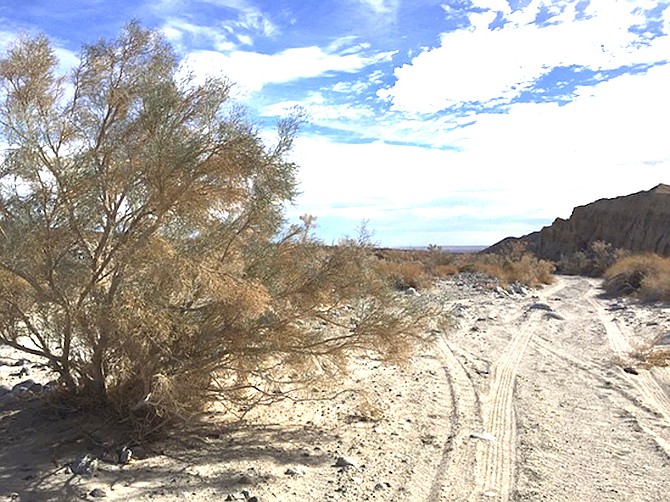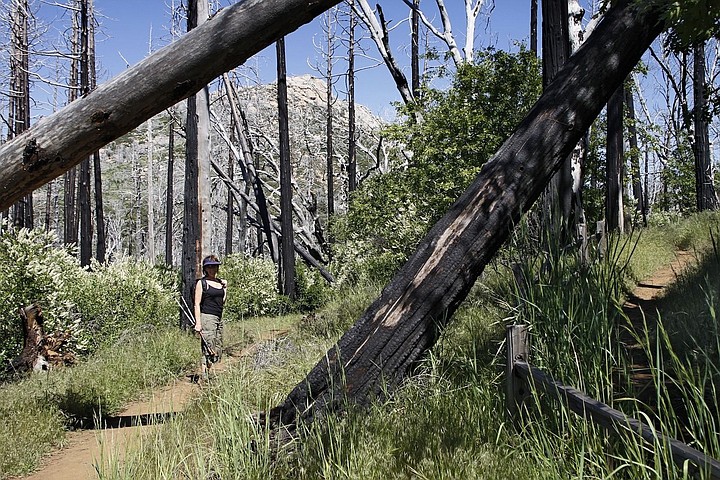 Facebook
Facebook
 X
X
 Instagram
Instagram
 TikTok
TikTok
 Youtube
Youtube

June Gloom, the cool and intermittently overcast conditions likely to dominate the beach and coastal areas through the remainder of this month, mocks the already sizzling temperatures inland. If it weren’t for the ocean’s enormous resistance to changes in temperature, the hottest weather along the coast would occur soon after the summer solstice — Monday, June 21. Our warmest beach weather will probably not arrive until August or September, just about the time the ocean water temperatures are peaking.
Cobbled Shorelines are greeting some beachgoers early this summer season, as in past years. North County beaches tend to suffer most, as the natural sand re plenishment in the area is disrupted by dams blocking the flow of sediment down the larger streams and rivers. Some sand scooped up from dredging operations is being moved onto the beaches to mitigate this problem. South County’s beaches fare better. The widest beach of all, Coronado, is protected from sand loss by the jutting Point Loma peninsula; it catches some sand drifting on currents northward from the mouth of the Tijuana River.
Western Azalea, a native rhododendron, is blooming this month in scattered locations throughout the county’s higher mountains. Fond of semi-shade, it’s often found growing along creeks and canyon bottoms. Like its ornamental cousins, western azalea’s fragrant white (sometimes pink or yellow tinted) flowers are borne in ornate clusters. Palomar Mountain State Park harbors a colony of them alongside a trail linking Doane Valley and Chimney Flats. White-flowering azaleas will undoubtedly appear again along the Azalea Glen Trail in Cuyamaca Rancho State Park.

The Blooming of Desert Annuals is over, but not so for the stolid desert willows and smoke trees. Rooted to the beds of dry washes throughout Anza-Borrego’s lower valleys, both plants gather enough energy this time of year to put on an impressive floral show. The graceful, drooping branches of the desert willow hold fragrant, white blossoms, while the spindly smoke tree exhibits myriad blue-purple flowers. To avoid the intense midday heat, confine your desert explorations to early morning or early evening. And watch out for bees — they’re attracted to the blossoms, too.
When the Big Dipper is high in the north in late spring and summer, what's down low in the north?
Think half a year ago. In late fall and winter Cassiopeia stood where the Dipper does now. That means that Cas currently lurks low.
As twilight fades out, look for it down near the north horizon: a wide, upright W. The farther north you live the higher it'll appear, but even as far south as San Diego and Atlanta it's fully above the horizon.
The above comes from the Outdoors listings in the Reader compiled by Jerry Schad, author of Afoot & Afield in San Diego County. Schad died in 2011. Planet information from SkyandTelescope.org.


June Gloom, the cool and intermittently overcast conditions likely to dominate the beach and coastal areas through the remainder of this month, mocks the already sizzling temperatures inland. If it weren’t for the ocean’s enormous resistance to changes in temperature, the hottest weather along the coast would occur soon after the summer solstice — Monday, June 21. Our warmest beach weather will probably not arrive until August or September, just about the time the ocean water temperatures are peaking.
Cobbled Shorelines are greeting some beachgoers early this summer season, as in past years. North County beaches tend to suffer most, as the natural sand re plenishment in the area is disrupted by dams blocking the flow of sediment down the larger streams and rivers. Some sand scooped up from dredging operations is being moved onto the beaches to mitigate this problem. South County’s beaches fare better. The widest beach of all, Coronado, is protected from sand loss by the jutting Point Loma peninsula; it catches some sand drifting on currents northward from the mouth of the Tijuana River.
Western Azalea, a native rhododendron, is blooming this month in scattered locations throughout the county’s higher mountains. Fond of semi-shade, it’s often found growing along creeks and canyon bottoms. Like its ornamental cousins, western azalea’s fragrant white (sometimes pink or yellow tinted) flowers are borne in ornate clusters. Palomar Mountain State Park harbors a colony of them alongside a trail linking Doane Valley and Chimney Flats. White-flowering azaleas will undoubtedly appear again along the Azalea Glen Trail in Cuyamaca Rancho State Park.

The Blooming of Desert Annuals is over, but not so for the stolid desert willows and smoke trees. Rooted to the beds of dry washes throughout Anza-Borrego’s lower valleys, both plants gather enough energy this time of year to put on an impressive floral show. The graceful, drooping branches of the desert willow hold fragrant, white blossoms, while the spindly smoke tree exhibits myriad blue-purple flowers. To avoid the intense midday heat, confine your desert explorations to early morning or early evening. And watch out for bees — they’re attracted to the blossoms, too.
When the Big Dipper is high in the north in late spring and summer, what's down low in the north?
Think half a year ago. In late fall and winter Cassiopeia stood where the Dipper does now. That means that Cas currently lurks low.
As twilight fades out, look for it down near the north horizon: a wide, upright W. The farther north you live the higher it'll appear, but even as far south as San Diego and Atlanta it's fully above the horizon.
The above comes from the Outdoors listings in the Reader compiled by Jerry Schad, author of Afoot & Afield in San Diego County. Schad died in 2011. Planet information from SkyandTelescope.org.
Comments